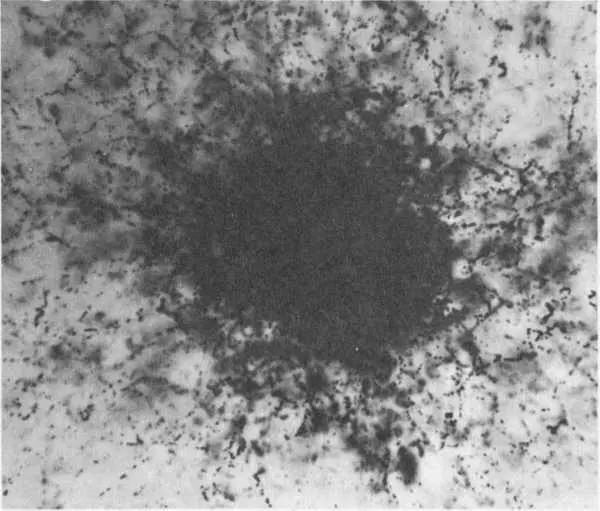Айзек Азимов - The Genetic Effects of Radiation
Здесь есть возможность читать онлайн «Айзек Азимов - The Genetic Effects of Radiation» весь текст электронной книги совершенно бесплатно (целиком полную версию без сокращений). В некоторых случаях можно слушать аудио, скачать через торрент в формате fb2 и присутствует краткое содержание. Год выпуска: 2018, Издательство: epubBooks Classics, Жанр: Медицина, Биология, на английском языке. Описание произведения, (предисловие) а так же отзывы посетителей доступны на портале библиотеки ЛибКат.
- Название:The Genetic Effects of Radiation
- Автор:
- Издательство:epubBooks Classics
- Жанр:
- Год:2018
- ISBN:нет данных
- Рейтинг книги:4 / 5. Голосов: 1
-
Избранное:Добавить в избранное
- Отзывы:
-
Ваша оценка:
- 80
- 1
- 2
- 3
- 4
- 5
The Genetic Effects of Radiation: краткое содержание, описание и аннотация
Предлагаем к чтению аннотацию, описание, краткое содержание или предисловие (зависит от того, что написал сам автор книги «The Genetic Effects of Radiation»). Если вы не нашли необходимую информацию о книге — напишите в комментариях, мы постараемся отыскать её.
The Genetic Effects of Radiation — читать онлайн бесплатно полную книгу (весь текст) целиком
Ниже представлен текст книги, разбитый по страницам. Система сохранения места последней прочитанной страницы, позволяет с удобством читать онлайн бесплатно книгу «The Genetic Effects of Radiation», без необходимости каждый раз заново искать на чём Вы остановились. Поставьте закладку, и сможете в любой момент перейти на страницу, на которой закончили чтение.
Интервал:
Закладка:
In addition, all the earth is bombarded with cosmic rays from outer space and with streams of high–energy particles from the sun.
Various units can be used to measure the intensity of this background radiation. The roentgen , abbreviated r , and named in honor of the discoverer of X rays, Wilhelm Roentgen, is a unit based on the number of ions produced by radiation. Rather more convenient is another unit that has come more recently into prominence. This is the rad (an abbreviation for “radiation absorbed dose”) that is a measure of the amount of energy delivered to the body upon the absorption of a particular dose of ionizing radiation. One rad is very nearly equal to one roentgen.
Since background radiation is undoubtedly one of the factors in producing spontaneous mutations, it is of interest to try to determine how much radiation a man or woman will have absorbed from the time he is first conceived to the time he conceives his own children. The average length of time between generations is taken to be about 30 years, so we can best express absorption of background radiation in units of rads per 30 years .

Natural radioactivity in the atmosphere is shown by this nuclear–emulsion photograph of alpha–particle tracks (enlarged 2000 diameters) emitted by a grain of radioactive dust.
The intensity of background radiation varies from place to place on the earth for several reasons. Cosmic rays are deflected somewhat toward the magnetic poles by the earth’s magnetic field. They are also absorbed by the atmosphere to some extent. For this reason, people living in equatorial regions are less exposed to cosmic rays than those in polar regions; and those in the plains, with a greater thickness of atmosphere above them, are less exposed than those on high plateaus.
Then, too, radioactive minerals may be spread widely, but they are not spread evenly. Where they are concentrated to a greater extent than usual, background radiation is abnormally high.
Thus, an inhabitant of Harrisburg, Pennsylvania, may absorb 2.64 rads per 30 years, while one of Denver, Colorado, a mile high at the foot of the Rockies, may absorb 5.04 rads per 30 years. Greater extremes are encountered at such places as Kerala, India, where nearby soil, rich in thorium minerals, so increases the intensity of background radiation that as much as 84 rads may be absorbed in 30 years.
In addition to high–energy radiation from the outside, there are sources within the body itself. Some of the potassium and carbon atoms of our body are inevitably radioactive. As much as 0.5 rad per 30 years arises from this source.
Rads and roentgens are not completely satisfactory units in estimating the biological effects of radiation. Some types of radiation—those made up of comparatively large particles, for instance—are more effective in producing ions and bring about molecular changes with greater ease than do electromagnetic radiations delivering equal energy to the body. Thus if 1 rad of alpha particles is absorbed by the body, 10 to 20 times as much biological effect is produced as there would be in the absorption of 1 rad of X rays, gamma rays, or beta particles.
Sometimes, then, one speaks of the relative biological effectiveness (RBE) of radiation, or the roentgen equivalent, man (rem). A rad of X rays, gamma rays, or beta particles has a rem of 1, while a rad of alpha particles has a rem of 10 to 20.
If we allow for the effect of the larger particles (which are not very common under ordinary conditions) we can estimate that the gonads of the average human being receive a total dose of natural radiation of about 3 rems per 30 years. This is just about an irreducible minimum.
Man-made Radiation
Man began to add to the background radiation in the 1890s. In 1895, X rays were discovered and since then have become increasingly useful in medical diagnosis and therapy and in industry. In 1896, radioactivity was discovered and radioactive substances were concentrated in laboratories in order that they might be studied. In 1934, it was found that radioactive forms of nonradioactive elements ( radioisotopes ) could be formed and their use came to be widespread in universities, hospitals, and industries. [4] For more about this subject, see Radioisotopes in Industry and Radioisotopes in Medicine , companion booklets in this series.
Then, in 1945, the nuclear bomb was developed. With the uranium or plutonium fission that produces a nuclear explosion, there is an accompaniment of intense gamma radiation. In addition, a variety of radioisotopes are left behind in the form of the residue ( fission fragments ) of the fissioning atoms. These fission fragments are distributed widely in the atmosphere. Some rise high into the stratosphere and descend (as fallout ) over the succeeding months and years. [5] For more about this subject, see Fallout from Nuclear Tests , another booklet in this series.
It is hard to try to estimate how much additional radiation is being absorbed by human beings out of these man–made sources. Fallout is not uniformly spread over the earth but is higher in those latitudes where nuclear bombs have been most frequently tested. Then, too, people in industries and research who are involved with the use of radioisotopes, and people in medical centers who constantly deal with X rays, are likely to get more exposure than others.
These adjuncts of modern science and medicine are more common and widespread in technologically advanced countries than elsewhere, and nuclear bombs have most often been exploded in just those latitudes where the advanced countries are to be found.
Attempts have been made to work out estimates of this exposure. One estimate, involving a number of technologically advanced countries (including the United States) showed that an average of somewhere between 0.02 and 0.18 rem per year was absorbed, as a result of radiations (usually X rays) used in medical diagnosis and therapy. Occupational exposure added, on the average, not more than 0.003 rem, though the individuals constantly exposed in the course of their work would naturally absorb considerably more than this overall average.

Man–made radioactivity in the atmosphere produced this nuclear–emulsion photograph. This radiation source is a fission product produced in a nuclear explosion. The enlargement is 1200 diameters. Compare this with the natural radioactivity depicted on page 28.
On the whole, the highest absorption was found, as was to be expected, in the United States.
If these findings are expanded to cover a 30–year period, assuming the absorption will remain the same from year to year, it turns out that the average absorption of man–made radiation in the nations studied varies from 0.6 rem to 5.5 rems per 30 years per individual.
Considering the higher figure to be applicable to the United States, it would seem that man–made radiation from all sources is now being absorbed at nearly twice the rate that natural radiation is. To put it another way, Americans are just about tripling their radiation dosage by reason of the human activities that are now adding man–made radiation to the natural supply. By far the major part of this additional dosage is the result of the use of X rays in searching for decayed teeth, broken bones, lung lesions, swallowed objects, and so on.
Part 4:
Интервал:
Закладка:
Похожие книги на «The Genetic Effects of Radiation»
Представляем Вашему вниманию похожие книги на «The Genetic Effects of Radiation» списком для выбора. Мы отобрали схожую по названию и смыслу литературу в надежде предоставить читателям больше вариантов отыскать новые, интересные, ещё непрочитанные произведения.
Обсуждение, отзывы о книге «The Genetic Effects of Radiation» и просто собственные мнения читателей. Оставьте ваши комментарии, напишите, что Вы думаете о произведении, его смысле или главных героях. Укажите что конкретно понравилось, а что нет, и почему Вы так считаете.








![Айзек Азимов - Земля Ханаанская. Родина иудаизма и христианства[The Land of Canaan]](/books/172206/ajzek-azimov-zemlya-hanaanskaya-rodina-iudaizma-i-h-thumb.webp)



